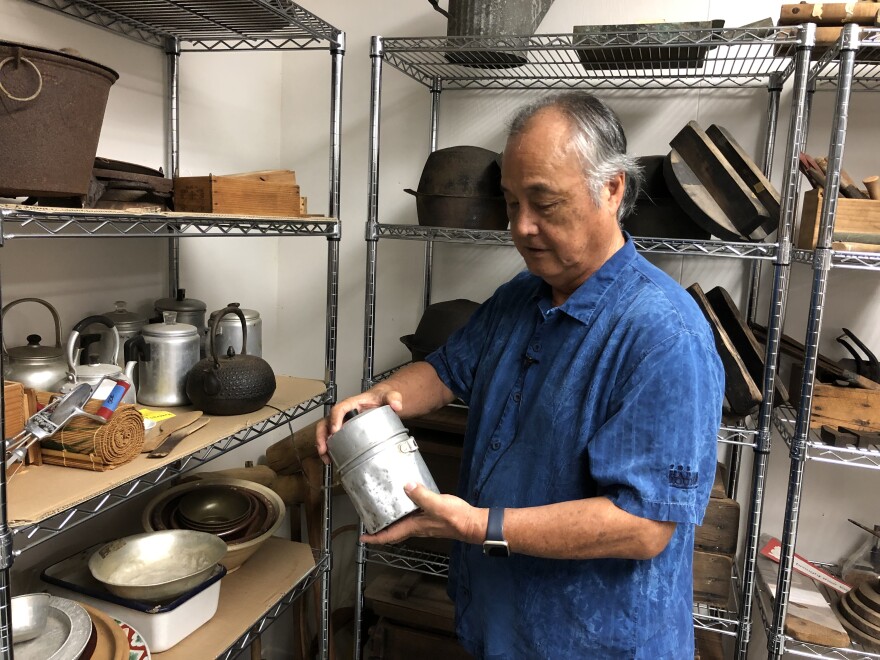Nonprofits and other organizations seeking grants in aid from the State Legislature have a Friday deadline to turn in their applications.HPR’s Wayne Yoshioka visited one of last year’s recipients in Hilo.

The Hawai’i Japanese Center, located at 751 Kanoelehua Avenue, is two blocks south from the entrance to the Hilo International Airport. The long, narrow building painted white with brown trim was once a construction office and warehouse. Arnold Hiura is president and executive director for the center.
“This facility was dedicated in 2007. So all of these improvements were made over a period of time with a good deal of volunteer labor and donated materials.”

The Center is 10-thousand square feet, with a dry wall interior, fluorescent lighting and air conditioning. The state legislature appropriated 175-thousand dollars in grant-in-aid money last year. Although that was about 3-fourths of what was requested, Hiura says it’s much appreciated, and will be used to build new display cases and new lighting for the 23-hundred square foot main exhibition hall.

“We want to tell a good and relevant story. At the same time, we wanna showcase some of our better objects and artifacts that we have in storage and share those with the public. For us to be able to do a first class exhibit will just take us to that next level, I think.”
Hiura says one of the Center’s most important roles is to tell the story of how people from different countries immigrated to Hawai’i and learned to work and live together in the sugar plantations.

“This simple little bento tin is one of my ‘go to’ artifacts. You know, the 2-part, the rice and okazu. I could tell them first hand on how people, during lunchbreak, would stop working; hold on to their container with rice, take the rest of their okazu or food and shove it in the middle of an impromptu circle; everybody squat around and eat lunch. You shared whatever you brought. Every Day. No exception.”
But, Hiura says, it wasn’t that simple. He says the bento tin symbolizes the essence of how plantation workers learned to get along.
“Think about it. If you had to share food every day, what would you bring? What if your co-worker brought something you absolutely don’t wanna eat. How awkward is that? If you don’t sample what he brought, he ain’t gonna sample what you brought, otherwise somebody’s gonna go hungry. So you have to eat it whether you like it or not. Whatever it looks like, whatever it smells like, whatever it tastes like, you know, culture demanded that you eat it and you like it.”

The center also has a work room where donations are received… an extensive library of local and Japanese textbooks and literature … as well as a gallery, community center conference room and soon to be dedicated oral history studio. Hiura says once construction is completed the center will be for everybody.
“Most of this stuff you see, especially

from the plantation era on, is common. The tools, the implements, utensils, the clothing, the plantation Pidgin. All of that is shared commonly across all ethnic backgrounds. So, this kind of work is not just limited to one ethnic group. It’s really a broader audience than that.”
For HPR News, I’m Wayne Yoshioka.




